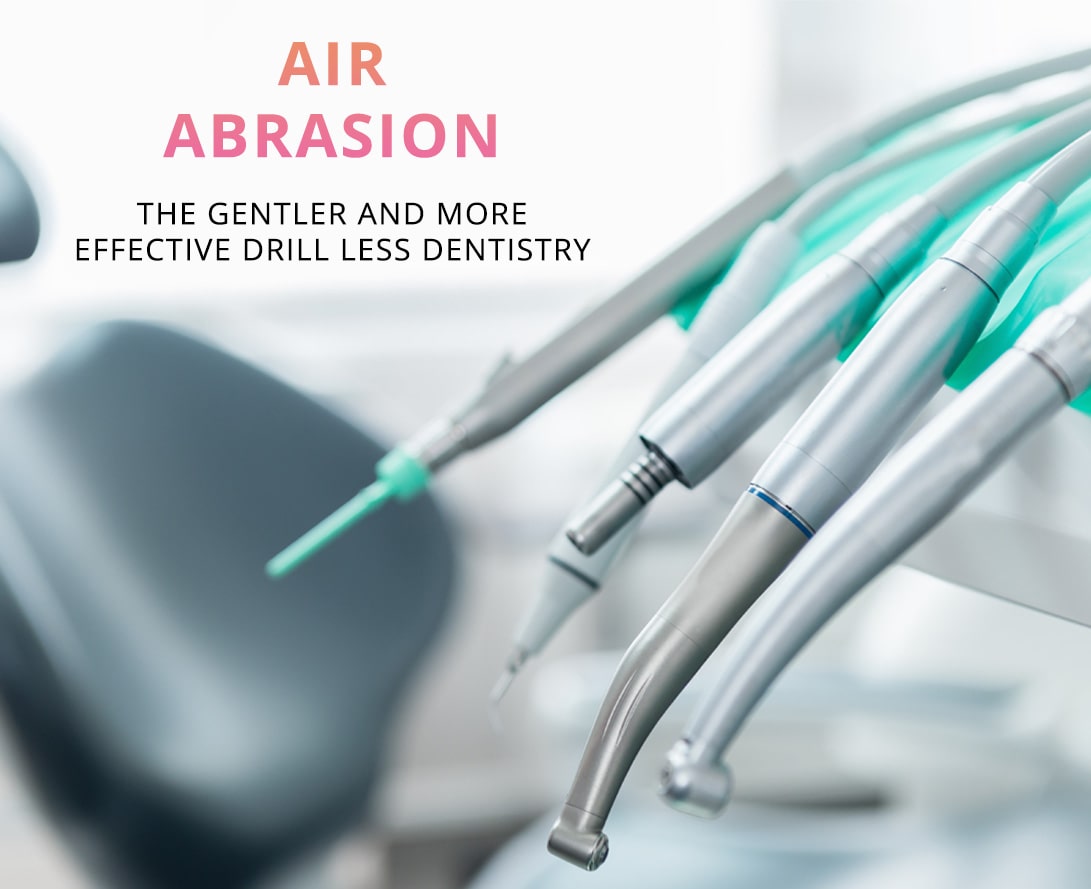Air Abrasion

The Gentler and More Effective Drill Less Dentistry
Air Abrasion
For most people, especially those that avoid going to the dentist, the thought of the dentist’s drill can be a real source of anxiety.
At DJ Maguire Dental Group, we offer state-of-the-art treatments which include revolutionary Air Abrasion dentistry. It uses a stream of pressurised air and tiny particles to remove enamel from your teeth in a variety of procedures- such as fillings or crowns.
It’s simple, safe and incredibly effective.
How air abrasion works
Air Abrasion uses an advanced dental tool that produces a fine stream of pressurised air and high-velocity particles, usually aluminium oxide or silica, giving your dentist much better control over where the stream is directed and how much enamel is removed.
The particles are safe and non-toxic and we use a special suction instrument to remove nearly all of them from your mouth.
Best of all, because air abrasion is so much gentler than traditional drills, there is usually no need to use any numbing agents- which means no needles!
